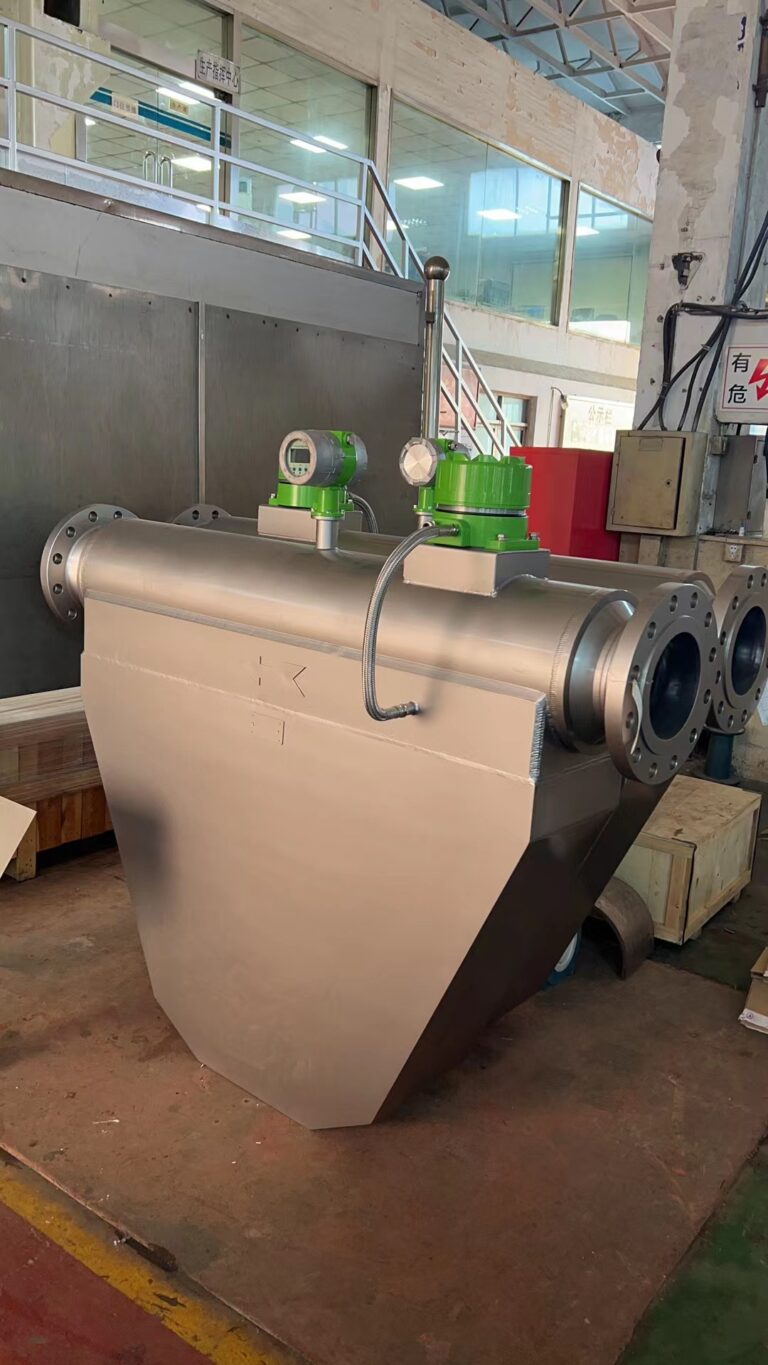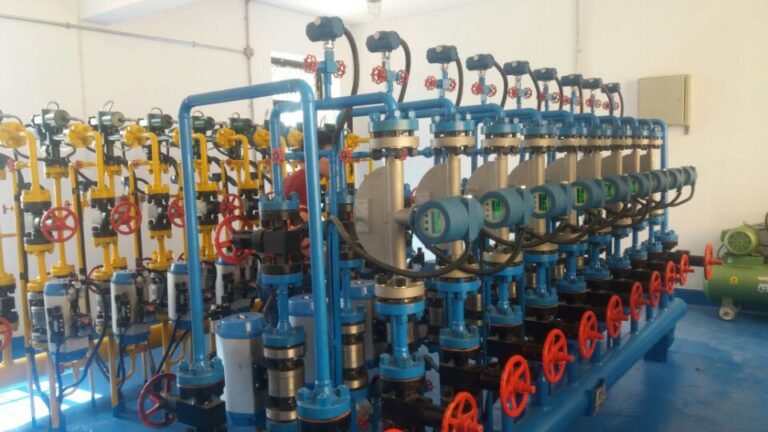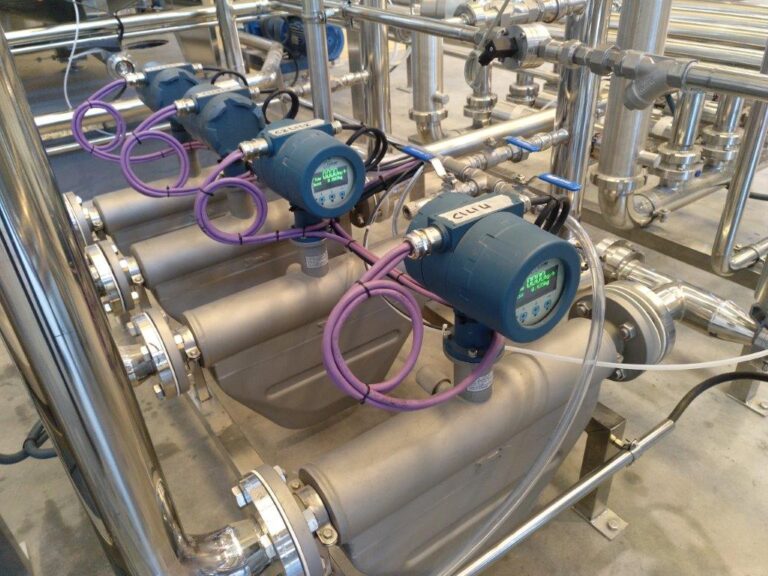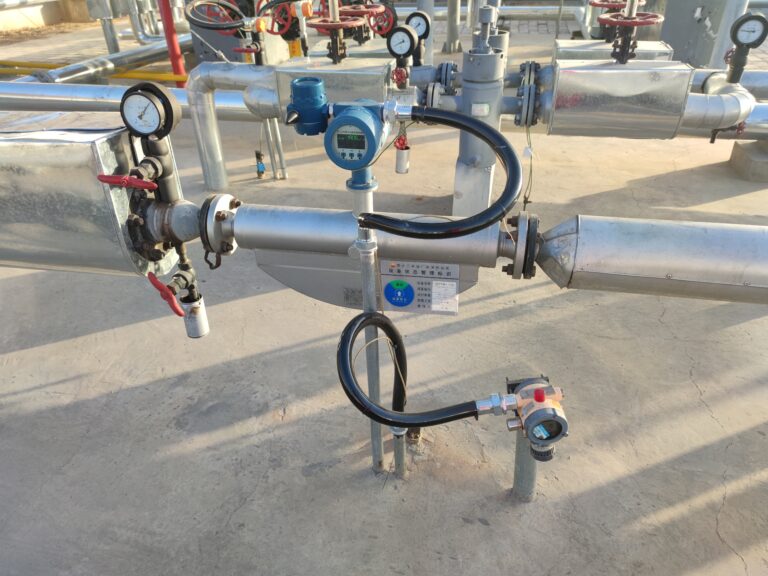Mass flow meters play a crucial role in accurately measuring multi-phase fluid mass flow. Their key advantages—insensitivity to changes in temperature, pressure, and viscosity—make them indispensable in the petrochemical industry, spanning the entire production chain from crude oil extraction to the dispatch of finished products. These meters are especially well-suited for high-temperature, high-pressure, corrosive, and high-viscosity environments. This article provides an in-depth exploration of their applications, technical details, selection criteria, and maintenance standards.
1. Core Applications and Key Details
1.1 Crude Oil Extraction and Gathering
Wellhead Measurement: Used to measure the output of individual oil wells, suitable for high-pressure (10 MPa) and high-temperature (120°C) environments. These meters directly measure the mass flow of crude oil, natural gas, and water, providing data to separate these components based on density (complying with GB/T 18603-2019 “Technical Requirements for Gas Measurement Systems”). Dual U-tube Coriolis mass flow meters are recommended for their high vibration resistance and ability to withstand sand particle impacts in fluid.
Gathering Pipeline Monitoring: In the oil gathering pipeline network, mass flow meters monitor pipeline efficiency, detect leaks through flow variations, and support insulation and pressurization systems. Explosion-proof meters (Ex d II CT4 and above) are essential for safety in oil-gas mixtures.

1.2 Refining Processes
Raw Material Flow Measurement: In units like atmospheric distillation, catalytic cracking, and hydrocracking, accurate measurement of feedstocks (crude oil, slurry oil, wax oil) ensures proper process control (e.g., reaction temperature, pressure, and catalyst ratio), with an error range within ±0.15%. In catalytic cracking, fluctuations in raw oil flow directly impact reaction depth, and Coriolis mass flow meters offer closed-loop control to stabilize product yield.
Catalyst Injection Measurement: In hydrogenation units, precise measurement of injected catalysts (typically 0.1-100 kg/h) is critical. Small flow Coriolis mass flow meters, offering high resolution (1×10⁻⁶), prevent equipment corrosion and efficiency losses due to inaccurate dosing.
Product Fractionation Measurement: At the top, bottom, and side outlets of distillation columns, mass flow meters measure intermediate products like gasoline, diesel, and kerosene. These readings ensure product distillation meets standards such as GB/T 252-2023 “Standard Diesel”.
1.3 Chemical Production
Material Ratio Measurement: In ethylene and propylene production, accurate measurement of feedstock flow (e.g., ethylene, ethane, propane) ensures precise ratios for polymer production, with error tolerance as low as ±0.2% for monomer to co-monomer ratios, thus maintaining uniform molecular weight distribution in polymer products.
Solvent Recovery Measurement: In processes like aromatic extraction and solvent de-asphalting, mass flow meters measure the recovery of solvents (e.g., cyclohexane, N-methyl pyrrolidone), ensuring stable solvent recycling and cost reduction. Corrosion-resistant materials like Hastelloy C-276 are necessary to prevent leaks.
1.4 Storage, Transportation, and Sales
Tank In/Out Flow Measurement: In storage tanks for crude and finished oils, mass flow meters ensure precise measurement at both the input and output, adhering to GB/T 9109-2019 “Dynamic Measurement of Petroleum and Liquid Petroleum Products—General Principles” with an allowable error of ±0.3%. Dual-meter redundant setups are used to enhance reliability.
Loading and Unloading Measurement: Mass flow meters in tanker loading stations provide accurate, automated loading of petroleum products (e.g., 30 tons of diesel per truck), with features like flow deviation alarms and emergency shutoff to prevent spills. These meters must support RS-485 or PROFINET communication protocols to integrate with terminal DCS systems.
Natural Gas Measurement: In LNG receiving stations and natural gas pipelines, mass flow meters measure gas mass flow and compensate for density to calculate standard volume, complying with GB/T 18604-2014 for gas ultrasonic flow meters.

2. Key Technical Details and Selection Criteria
2.1 Type Selection
Coriolis Mass Flow Meters: The most widely used in the petrochemical industry (over 80% of the market), providing high accuracy (±0.1%-±0.5%) and suitable for liquid, gas, and multi-phase flow. They are available in single-tube (for low-viscosity, clean fluids) and dual-tube (for high-viscosity and vibration-resistant fluids) designs.
Thermal Mass Flow Meters: Primarily for dry gases like nitrogen and compressed air, with an accuracy of ±1%-±2%. These meters are easy to install and incur no pressure loss, ideal for medium to small flow applications like instrument air monitoring.
Differential Pressure Mass Flow Meters: These low-cost meters, using a differential pressure sensor and density sensor combination, are suitable for high-flow, high-temperature, and high-pressure applications (e.g., main steam pipelines). However, accuracy can be affected by fluid flow conditions, so rectifiers are often required.
2.2 Material and Environmental Suitability
Materials for Contact with Media: For sulfur-containing media (e.g., crude and heavy oils), 316L stainless steel or Hastelloy alloys are recommended. For highly corrosive media (e.g., acid/base solutions, chlorine-containing solvents), tantalum alloys or PTFE linings should be used. For high-temperature environments (>300°C), Inconel alloys are ideal.
Pressure and Temperature Ranges: Choose according to process conditions. For wellhead measurement, the meter must withstand 10-30 MPa pressure and -40°C to 150°C temperatures; LNG measurement requires resistance to -196°C and 1.6-10 MPa pressure.
2.3 Explosion-Proof and Protection Ratings
Explosion-Proof Ratings: For hazardous areas (e.g., tank farms, processing units), choose meters with Ex d II CT4 (explosion-proof) or Ex ia II CT4 (intrinsically safe) ratings, complying with GB 3836 standards.
Protection Ratings: For outdoor installations, ensure an IP67 or higher protection rating to prevent ingress of water and dust that could lead to failures.

3. Installation and Maintenance Guidelines
3.1 Installation Requirements (According to GB 50093-2013 “Automated Instrumentation Engineering Construction and Quality Acceptance Code”)
Installation Location: Avoid installing near high-vibration sections of pipelines (e.g., near pump outlets). Ensure a straight pipe section of ≥5 pipe diameters upstream and ≥3 pipe diameters downstream of the meter. For vertical installations, ensure the flow direction is from bottom to top to fill the sensor completely.
Explosion-Proof Installation: The instrument’s junction box should be properly sealed, with cables connected via explosion-proof flexible conduit and grounding resistance ≤4Ω. Intrinsically safe meters should be paired with safety barriers installed in non-hazardous areas.
Temperature Compensation: For high-temperature applications, install temperature sensors upstream and downstream of the meter to achieve temperature compensation and improve measurement accuracy.
3.2 Daily Maintenance
Calibration: Trade measurement instruments should be calibrated annually, while process control instruments need calibration every two years, following JJG 1038-2008 “Coriolis Mass Flow Meter Calibration Procedures”. Calibration can be done offline (via a calibration agency) or online (using a standard flow meter for comparison).
Cleaning and Inspection: Regularly clean the sensor cavities to remove scale, impurities (e.g., asphaltenes and waxes from crude oil), and ensure that the vibration frequency is not affected. Inspect the instrument housing and junction boxes for damage, ensuring explosion-proof seals are intact.
Troubleshooting: Common issues include “excessive flow fluctuation” (likely caused by pipeline vibrations or high gas content, requiring pipeline reinforcement or gas-liquid separators), “zero drift” (due to sensor contamination or installation stress, requiring cleaning or reinstallation), and “communication interruptions” (requiring cable checks or DCS interface configuration).

4. Domestic Alternatives and Cost-Effectiveness Analysis
Domestic brands can achieve accuracies of ±0.2%-±0.5% in routine conditions (e.g., refining feedstock measurement, tank truck loading), with prices 50%-70% lower than imported brands (e.g., Emerson, Endress+Hauser).
Substitution Scenarios: For non-trade measurements (e.g., catalyst injection, solvent recovery), domestic brands can be prioritized. For trade measurement or extreme conditions (e.g., LNG at -196°C, high-pressure wellhead measurements), a mixed solution of “imported core components + domestic assembly” can be used to balance accuracy and cost.
Advantages: Domestic brands offer better compatibility with DCS systems (e.g., Zhejiang University Control, Hollysys), localized services (response time ≤24 hours), and custom development (e.g., specialized sensors for high-viscosity crude oil).
